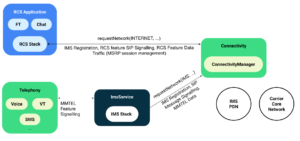Nonprofits can benefit from outcome measurement because it helps determine the effectiveness of programs and services. Outcome measurement is essential for larger and smaller organizations trying to stretch every dollar and staff hour. With outcome measurement, nonprofits can tell which efforts are successful and which are not and eliminate or improve the programs that don’t.
Impact Evaluation
In the nonprofit sector, impact evaluation and measurement of outcomes are important tools for achieving a nonprofit’s goals. Using these tools, nonprofits can demonstrate their impact on beneficiaries and the community. For example, outcomes can include the number of people who have attended a program or have a job with a scheme’s employer. Effective evaluations must answer critical questions about the impact of programs and the community. For this purpose, nonprofits need to collect reliable and consistent data.
Operational Efficiency Measurements
Nonprofits need to be able to measure their performance to meet their objectives. These measurements can help nonprofits demonstrate their effectiveness and raise additional cash flow. The key to measuring performance is creating and monitoring measures relevant to the nonprofit’s mission. Identifying the right metrics and distinguishing between performance and outcome metrics is essential. This will help nonprofits of all sizes gain a clear understanding of their organizational health and how they can plan for growth in the future.
Budget Analysis
Nonprofits need to measure the outcomes of their programs to determine if their work is practical. While some organizations use output measurement, many other types of measurement are also valid. Nonprofits may be more successful if they focus on non-program activities and measures to measure the impact of their work.
Nonprofits must also determine the outcomes they want to measure and what questions they want to ask to collect data about these outcomes. Most nonprofits use current activities to guide their measurement. For example, tracking the number of people served, key demographic information on participants, and programs attended can help nonprofits evaluate the effectiveness of their work.
Storytelling As A Method Of Evaluating Programs
Storytelling is a powerful way to reach decision-makers and share experiences. It illustrates things in ways that conventional reporting cannot. And thanks to digital tools, almost anyone can tell their story of change. In addition, recent software makes it possible to group stories into categories and analyze them for trends and patterns. The most common technique used for evaluation is the most significant change (MSC). Rather than assessing change with quantitative measures, storytellers determine their stories’ impact on the community. This approach is particularly effective at assessing intangible change and the process by which change happens.
Cost-Effectiveness
Nonprofits need to determine their overall efficiency by evaluating the costs of their programs and activities. To measure their efficiency, nonprofits can use different types of cost-effectiveness measures. These include a cost per unit of service and revenue versus expenses. Nonprofits can also use a cost-per-output ratio to determine how well they spend their funds.
In addition to evaluating costs, nonprofits can use key performance indicators to monitor how well their programs and services are working. These measures can be as simple as measuring the number of people served by a program or as complex as identifying staff members’ performance. These metrics can help nonprofits improve the quality of their programs and services and demonstrate their effectiveness to “investors.”






More Stories
Is Companion Device Manager Spyware? 10 Shocking Truths Revealed
How To Delete Cash App Account Hassle-Free: A Step-By-Step Guide
Stopwatt Reviews: Scam or Legit? A Detailed Analysis